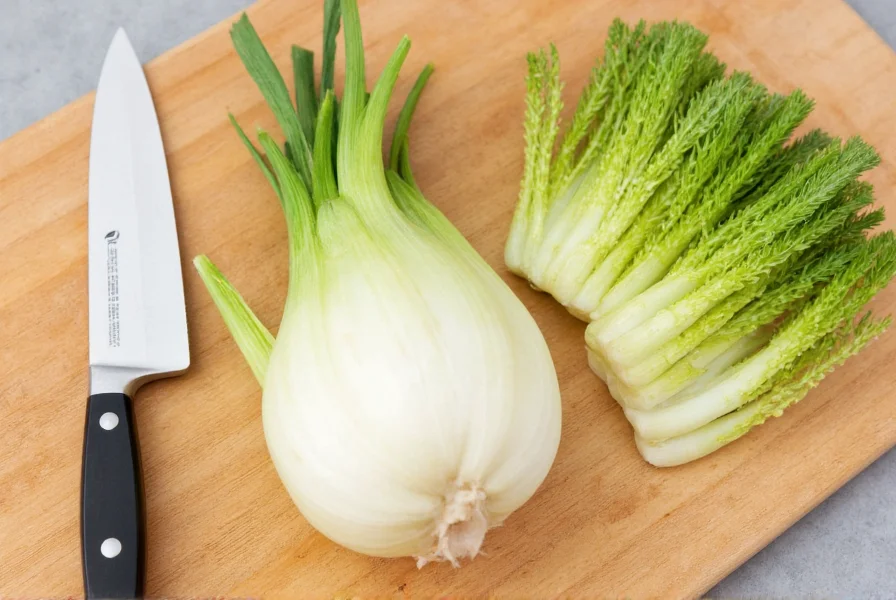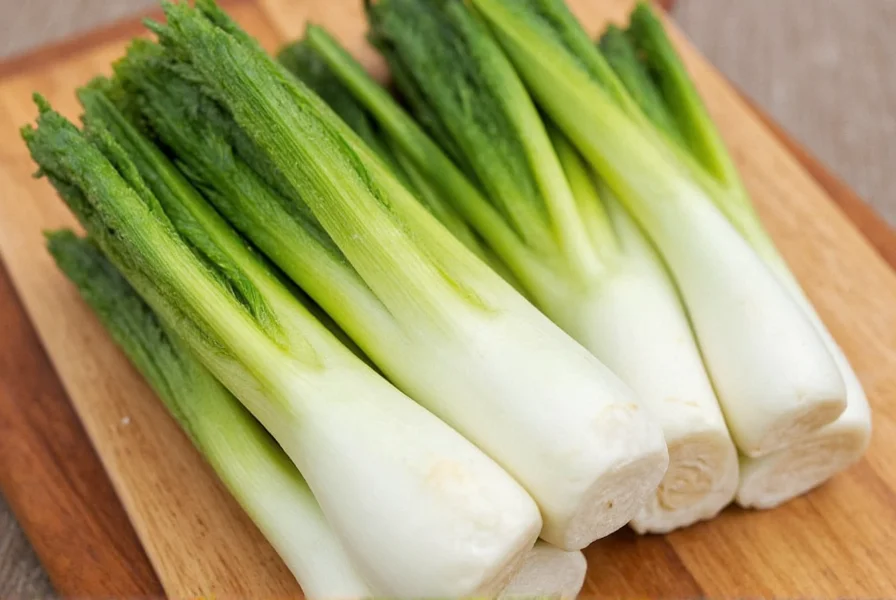Many home cooks feel intimidated by fennel's unique structure, but mastering how to cut fennel properly unlocks its wonderful anise-like flavor for salads, roasts, and soups. This versatile vegetable has three edible components: the bulb, the feathery fronds, and the stalks. Knowing how to prepare each part correctly makes all the difference in both texture and taste.
Essential Tools for Cutting Fennel
Before learning how to cut fennel, gather these kitchen essentials:
- Sharp chef's knife (8-10 inches)
- Sturdy cutting board
- Vegetable peeler (optional)
- Small bowl for fronds

Step-by-Step Guide: How to Cut Fennel Properly
1. Prepare the Fennel Bulb
Start by removing any wilted or discolored outer layers. Unlike onions, fennel doesn't have multiple papery layers, but the very outer layer can be tough. If it appears dry or fibrous, peel it away with your fingers or a vegetable peeler.
2. Trim the Stalks and Fronds
Cut off the stalks about 1 inch above the bulb. The feathery fronds make an excellent garnish or can be used like dill in recipes. Chop them finely and store in a small bowl of water until ready to use. You'll learn how to cut fennel fronds effectively later in this guide.
3. Remove the Base
Slice a thin portion off the root end to create a stable flat surface. This step is crucial for safely learning how to cut fennel without the bulb rolling on your cutting board.
4. Core Removal Technique
This is where many people struggle when figuring out how to cut fennel. Stand the bulb upright on the flat base you just created. Using a sharp knife, cut vertically through the center to divide the bulb in half. The tough core will be visible in the center of each half.
To remove the core:
- Place each half flat-side down
- Angle your knife slightly
- Cut out the triangular core section
- Discard the tough core
| Cutting Method | Best For | Knife Size |
|---|---|---|
| Thin Slices | Salads, raw preparations | 8-10 inch chef's knife |
| Diced | Soups, stews, roasting | 7-8 inch chef's knife |
| Julienned | Stir-fries, garnishes | 6-7 inch utility knife |
5. Slicing Techniques
Now that you've mastered how to cut fennel and remove the core, choose your cutting style:
Thin Slices for Salads
Place each core-removed half flat-side down. Make thin, even slices perpendicular to the layers. For a beautiful presentation, angle your knife slightly for diagonal cuts. This method works perfectly when you need to cut fennel for raw applications.
Dicing for Cooking
After removing the core, cut the fennel halves into planks, then stack the planks and cut into sticks. Finally, dice across the sticks for uniform pieces. This technique ensures even cooking when you cut fennel for soups or roasts.
Julienne for Garnishes
For delicate garnishes, cut very thin matchsticks. This works especially well with the tender inner portions of the bulb. Many chefs wonder how to cut fennel fronds for garnish—simply gather a small bunch and slice thinly crosswise.
Special Considerations When Cutting Fennel
Understanding how to cut fennel properly involves recognizing its unique properties:
Fennel's Natural Structure
Fennel grows in concentric layers from the center outward. When learning how to cut fennel, work with this natural structure rather than against it. Cutting parallel to the layers creates longer, more elegant slices, while cutting perpendicular creates more delicate pieces that cook faster.
Preventing Browning
Unlike apples or potatoes, fennel doesn't brown quickly when exposed to air. However, if preparing in advance, store cut fennel in cold water with a squeeze of lemon juice. This maintains crispness when you cut fennel ahead of time for meal prep.
Working with Different Fennel Sizes
Smaller fennel bulbs tend to be more tender with less fibrous cores, making them easier when you cut fennel for raw applications. Larger bulbs have more pronounced layers and may require more thorough core removal. Adjust your technique accordingly based on bulb size.

Storing Cut Fennel Properly
After you've successfully cut fennel, proper storage maintains freshness:
- Place in airtight container with slightly damp paper towel
- Store in refrigerator crisper drawer
- Use within 3-4 days for best quality
- Submerge in cold water for extended freshness (change water daily)
Common Mistakes to Avoid When Cutting Fennel
Even experienced cooks make these errors when learning how to cut fennel:
- Skipping core removal - The core is tough and fibrous, ruining texture
- Using a dull knife - Crushes rather than cuts the delicate layers
- Cutting against the grain - Creates uneven pieces that cook inconsistently
- Discarding edible parts - Stalks and fronds are flavorful and versatile
Putting Your Fennel Cutting Skills to Work
Now that you know how to cut fennel properly, try these applications:
- Raw preparations: Thinly sliced fennel shines in salads with citrus and olive oil
- Roasting: Cut into wedges with core intact for dramatic presentation
- Soups and stews: Dice uniformly for even cooking
- Garnishes: Use finely chopped fronds to finish dishes
Mastering how to cut fennel properly transforms this potentially intimidating vegetable into a kitchen staple. With practice, you'll develop your own preferred techniques for different recipes. Remember that the key to perfect fennel preparation lies in respecting its natural structure while removing the tough elements.











 浙公网安备
33010002000092号
浙公网安备
33010002000092号 浙B2-20120091-4
浙B2-20120091-4